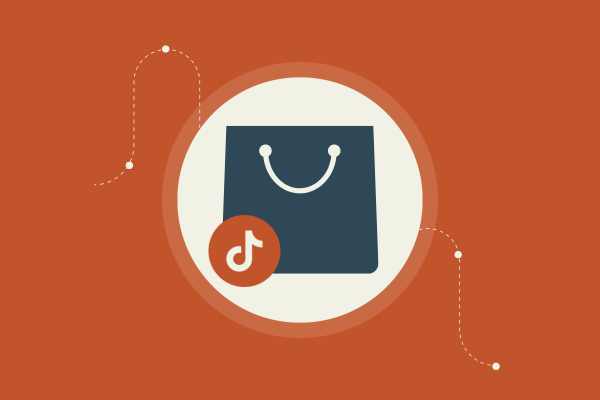How to Implement Lead Scoring for Your eCommerce Business
Are you ready to boost sales in your eCommerce business? Lead scoring is your secret weapon. It ranks your prospects based on their potential value, so you can focus on the leads most likely to convert. This saves time and energy, letting you zero in on what truly matters.
In the eCommerce world, not all leads are created equal. Some are just window shopping, while others are ready to hit "buy now." Understanding your customers' behaviors and interests is the key. You need a system that allows you to respond to their needs with precision.
When sales and marketing work together, magic happens. Integrating lead scoring into your CRM not only aligns teams but also automates processes for more efficiency. When everything clicks, you’ll see how powerful lead scoring can be in driving sales growth.
Key Takeaways
Lead scoring focuses sales efforts on high-potential leads.
Understanding customer behavior is crucial for effective scoring.
CRM integration and team collaboration enhance results.
Decoding Lead Scoring
Lead scoring transforms your sales process by prioritizing leads who are more likely to buy. This method enhances efficiency, allowing you to focus on converting high-potential prospects. Let’s break it down.
Lead Scoring Definition
Lead scoring is your secret weapon to identify hot prospects. It's a system where you assign points to different actions and characteristics of your leads. For instance, more points for checking out pricing pages, fewer for just browsing a blog.
Think of it as a report card for your leads. High scores mean they're ready to buy. It’s not just about their actions. Demographic info counts too. Age, location, job title – these all play a part.
The goal? Segment your audience and decide who's worth your time. You streamline your sales process and build trust by focusing on prospects who are seriously considering your products.
Why Lead Scoring is a Game Changer
Lead scoring changes the entire game for your sales team. You save time and resources by focusing on leads that actually want to buy. This means higher conversion rates without wasting energy on dead ends.
Your marketing and sales departments start speaking the same language. They use data, not gut feelings, to make decisions. This creates a united strategy that drives more sales.
With this approach, you get to know your audience better. That means you can tailor your messages to what they care about. And when you do this right, trust builds quickly. By scoring leads, you empower your team and maximize your sales potential.
Setting Up Your Lead Scoring Model
Getting your lead scoring model off the ground is like setting up a coffee shop. You first pick the beans, then decide how strong you want the brew, and finally, you figure out who your regular customers are going to be. Let’s get into those steps.
Identifying Lead Attributes
First off, you need to know which lead attributes are worth your attention. These could be demographic traits like age and location or behavior-based actions such as product views or cart additions.
Imagine you're selling sneakers online. You might target people who have browsed your website multiple times or spent time looking at your top-tier sneakers. Buyers who subscribe to your newsletter are also valuable.
It's essential to choose attributes that really show buying intent. Use marketing data to find patterns. For instance, do users who, say, download a guide convert better? That kind of insight will fuel your model with relevant criteria.
Assigning Point Values
Now that you’ve got your attributes, it’s time to assign point values to them. This assigns weight to each action or characteristic, reflecting its importance.
Let's say visiting your website gets 5 points. Downloading a catalog might snag 10 points. Buying a product gets 50. The point is to make sure the actions that lead to sales have higher values.
Be careful not too overload any single action with excessive point values. Too many points for one action and your scoring could get skewed. Keep your ranges realistic and consistent; think of it like grading on a curve.
Establishing Score Thresholds
This is where the magic happens. Score thresholds help you decide when to pass a lead to sales. You might set a threshold at 50 points for a sales team follow-up.
Frequent actions should not overly influence this threshold. A lead needs to be the real deal.
Test and tweak these thresholds often. If leads aren’t converting, tweak the scores and thresholds. Real world data should guide your adjustments as patterns and behaviors evolve.
Knowing Your Customers
To fire up your lead scoring game, you gotta know who you're dealing with. This means diving into demographics and crafting buyer personas.
The Role of Demographics
Demographics are like the basic building blocks of your customer understanding. You wanna get to grips with demographic information, which includes age, gender, income, and location.
Why? Because these things tell you who your customer is. It helps you find patterns, like which age group buys more or who visits your site the most.
Grab this info from surveys, purchase history, or even social media insights. Once you have it, you can tailor your marketing strategies. For example, certain products might appeal more to a younger crowd, while others might be better suited for an older demographic. This laser-focused approach will bump up your sales.
Understanding Buyer Personas
Buyer personas bring your customers to life. Think of them as detailed sketches of your ideal customer profile. They go beyond demographics and dig into motivators and pain points.
To create these personas, combine data with insights. Check out past interactions, purchase behavior, and even feedback. This helps you see not just who your customers are, but why they buy.
For instance, one persona might value sustainability, while another cares mostly about price. By tailoring your messaging and products to each persona, you connect on a deeper level. This means aligning your offers with exactly what these customers want, ultimately boosting your sales.
Harnessing Behavioral Data
You want to boost sales? Use your customers' actions to your advantage. Track what they do and make it work for you. This is how you get in their heads and predict their moves.
Tracking Website Visits and Activities
Keep an eye on website visits. Every click, scroll, and purchase tells a story. Use this data to understand customer interests and preferences.
Set up tools like Google Analytics to see which pages get the most action. Track how long people stay and where they drop off. Focus on hot spots—pages with lots of visits or repeated clicks—because they show interest.
Identify patterns in shopping behaviors. This means looking at what products people view often but don’t buy. Knowing this helps you push the right deals. Your website is a goldmine of information.
Analyzing Email and Social Media Engagement
Emails and social media are where you see real interaction. Track open rates and clicks on your emails to know what grabs attention.
On social media, pay attention to comments, likes, and shares. These are clear signs someone is interested. Use this info to tailor messages that resonate with your audience.
Use tools like email trackers to measure engagement levels. More engagement means the messages are hitting the mark. Adjust your email content based on the results to improve future interactions.
Interpreting Content Downloads
Downloads are a strong signal of interest. They show that people want more from you. Treat downloads like treasure chests of insights.
Look at what content leads to downloads. Is it a guide, a whitepaper, or a catalog? This tells you what types of content attract your potential customers.
Track who downloads your content and how often. Frequent downloaders are engaged and may be ready to buy. Follow up with personalized offers or content based on what they've shown interest in.
Integrating Lead Scoring with CRM
Connecting lead scoring with your CRM can transform how you manage leads. It helps you prioritize sales efficiently, automates tasks, and boosts team productivity. Let’s dive into the key elements of making this integration work for you.
Syncing with Your Sales Funnel
This is where the magic begins. By integrating lead scoring with your CRM, you can align it with your sales funnel seamlessly. This connection lets you track where each lead is in the buying process. It helps you adjust your strategy based on their activity and interests. When you know exactly what stage a lead is in, you can tailor your efforts to push them further.
Keep your sales funnel tight and no-fuss. Your leads get the right kind of attention at the right time. You’ll stop wasting time on leads that aren’t ready yet. With CRM systems synced to lead scoring, you can see exactly when a lead is hot and ready to close.
Data-Driven Marketing Automation
Data is king, right? Pairing lead scoring with marketing automation can help you make smart decisions. It's all about using data from your CRM to craft messages that hit the spot. You can automate email sequences and follow-ups based on lead scores. This strategy frees up a ton of time and keeps things running smoothly.
Picture this: automatic emails that are triggered when your lead scores hit a certain mark. It’s like having a 24/7 assistant guiding your leads through the buying journey. Your marketing automation tools work in harmony with your CRM to provide a personalized touch that resonates with your audience. And you're there when it counts.
Boosting Sales Productivity
Boosting sales productivity is the ultimate goal. When your CRM and lead scoring are best friends, your sales team's productivity can skyrocket. Imagine spending less time chasing lukewarm leads. Your team focuses on the ones who are ready to buy. That means more closed deals and higher revenue.
By prioritizing leads, you make sure your team’s efforts aren’t wasted. This integration gives everyone a clear view of who's worth the chase. No more guesswork, just clear paths to success. Your CRM becomes a powerhouse, directing your team to focus on what truly matters for impactful results. With this in place, your sales game gets stronger and smarter every day.
Actioning on Lead Scores
So, you've got your lead scores. Now, it's all about taking action. This means focusing your sales efforts where they matter most. Let’s dive into how you can improve your outreach efforts with these scores.
Prioritizing Outreach Efforts
When you’re looking at lead scores, think of them like a map showing where the treasure is. High scores? Those are your gold mines. Make them your top priority. These leads are more likely to convert, so you want to reach out to them first.
Use tools to manage these priorities. For example, a CRM system can help you sort and manage these leads. Sort your list by lead score, and start from the top. Get your team on it!
Time is money. Don’t waste it on leads less likely to convert. Your focus should be on quality, not quantity. Spend energy where it’ll make the biggest impact.
Tackling Hot vs. Cold Leads
Hot leads? They’re the ones who’re buzzing with interest. They’ve shown signs they’re ready to buy. Jump on these as soon as you can. Fast follow-ups can set you apart from competitors.
Cold leads, on the other hand, are trickier. They need more nurturing. Create a plan to gradually warm them up. It might take more time, but the reward can be worth it.
For hot leads, maybe a direct call is best. For cold leads, think about sending helpful content or personalized emails. The idea is to keep the conversation going without being pushy.
Understanding the difference in these leads helps tailor your approach. You’ll know where to dial up the effort and where to play the long game.
Enhancing Lead Scoring Effectiveness
To supercharge your lead scoring, you need to think outside the box. By effectively using negative scoring and personalizing experiences with high-quality data, you can elevate your game. These elements will help you identify the hottest leads and drive more sales.
The Power of Negative Scoring
Negative scoring flips lead scoring on its head. It’s not just about what makes a great lead—it's about spotting the red flags, too. When a lead shows signs like low engagement or irrelevance, they should get a negative score.
Negative scoring helps you filter out the tire-kickers. It ensures your sales team focuses on the leads most likely to convert. For example, if a lead doesn’t open emails or visits your website briefly, it's a sign they’re not interested.
By acknowledging these actions, you're tightening the funnel. It keeps your sales team from wasting time and resources. Regularly review the scoring criteria to make sure your team is always on point.
Personalization and High-Quality Data
High-quality data is your secret weapon. It lets you personalize experiences for your leads, showing them what they want to see. Think about the data you collect: browsing history, purchase behavior, and engagement data are gold mines.
Personalizing based on this information turns random leads into loyal customers. When you send relevant messages, visitors are more likely to respond. This means better conversion rates and happier customers.
The goal is to treat each lead like a VIP. You achieve this by combining accurate data with sophisticated tools to tailor every interaction. Keep refining your data and methods to ensure your approach stays sharp and effective.
Collaboration Between Sales and Marketing
To skyrocket your sales game, your sales and marketing teams must work as a single engine. Syncing them up means more leads, better conversions, and an unstoppable force in the market.
Aligning Goals and Strategies
Your sales and marketing teams need to speak the same language. Get them together and set clear goals. Both teams should know what’s a win and how to get there. Set targets like revenue numbers, lead volume, and conversion rates.
Marketing strategies must support sales targets—simple as that. If sales aim to close more deals with high-value clients, marketing should focus on attracting and nurturing leads from that segment. Regular meetings and reports keep everyone on the same page and accountable.
Creating a Unified Sales and Marketing Engine
Think of your sales and marketing teams as gears in a machine. Alone, they might slip or stall. Together, they power the whole engine.
Start by setting up regular collaboration sessions. These can cover reviewing lead scoring models, sharing insights, and tweaking strategies.
Use tech to your advantage. There are tons of tools and platforms to help you streamline communications and track all those juicy data points.
Dig into analytics to spot trends where sales and marketing can team up for extra firepower. Put in the time now, and watch your results soar.
Scaling up with Automation Tools
To boost your eCommerce game, it's not just about having a strategy. It's about scaling that strategy with tools that do the heavy lifting.
Let’s talk about streamlining lead scoring with automation and picking the right tech for the job.
Automate Lead Scoring for Efficiency
You're busy. We get it. Automating lead scoring can save you tons of time. With automation, you don't need to manually score every lead. The system works, and it works fast.
It can handle tons of data, analyze it, and give leads scores based on specific behaviors and attributes.
Use lead scoring tools that tap into machine learning to predict which leads are hot, and which are not. This is crucial in your eCommerce to quickly prioritize leads that matter.
Also, automation means consistency. Every lead is scored by the same criteria every time. No bias, no human error. It's like having a super reliable assistant who never misses.
Choosing the Right Tools
Now, let’s talk tools. Not all tools are created equal, so you need the right ones. A good marketing automation tool should integrate smoothly with your existing eCommerce platform. You should think of seamless data flow without the tech headaches.
Look for tools that offer customization. You want to tweak the rules and scores to fit your business, not some generic setup. Some might find a 1-100 score perfect. Just make sure it aligns with your goals.
Finally, make sure you can scale with these tools. As your business grows, your lead scoring needs will too. Choose tools that can handle increased capacity and let you focus on driving sales—not wrestling with tech.







